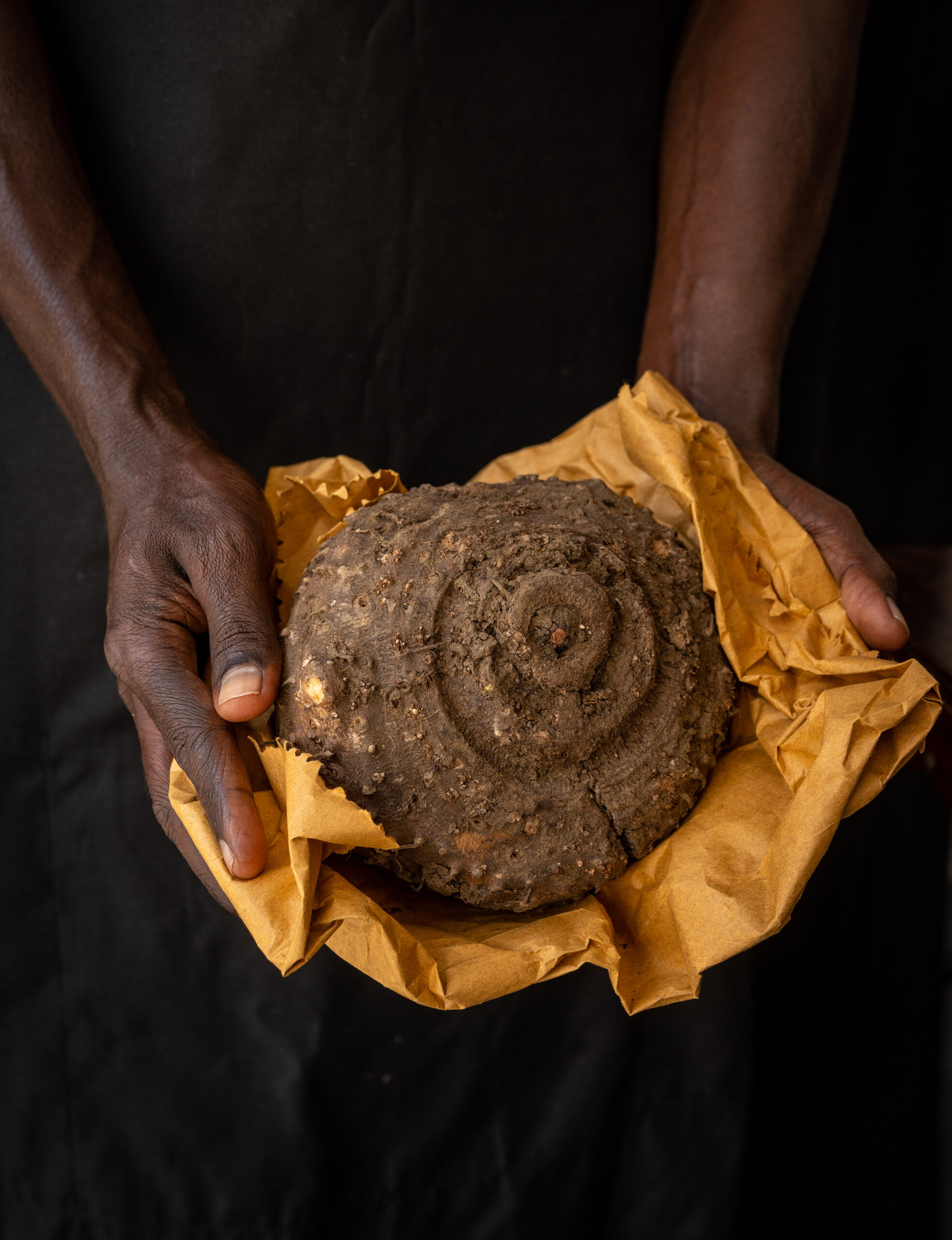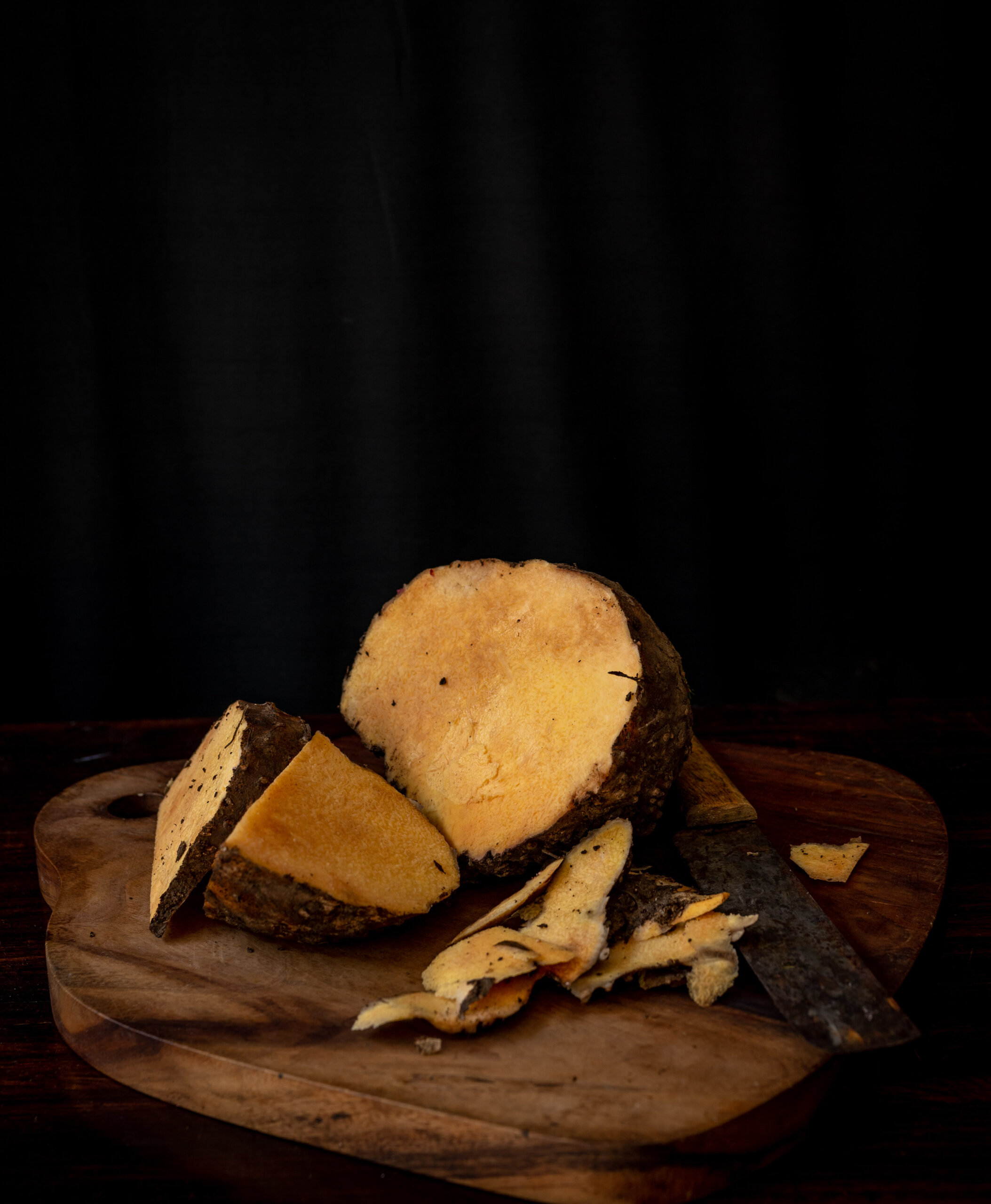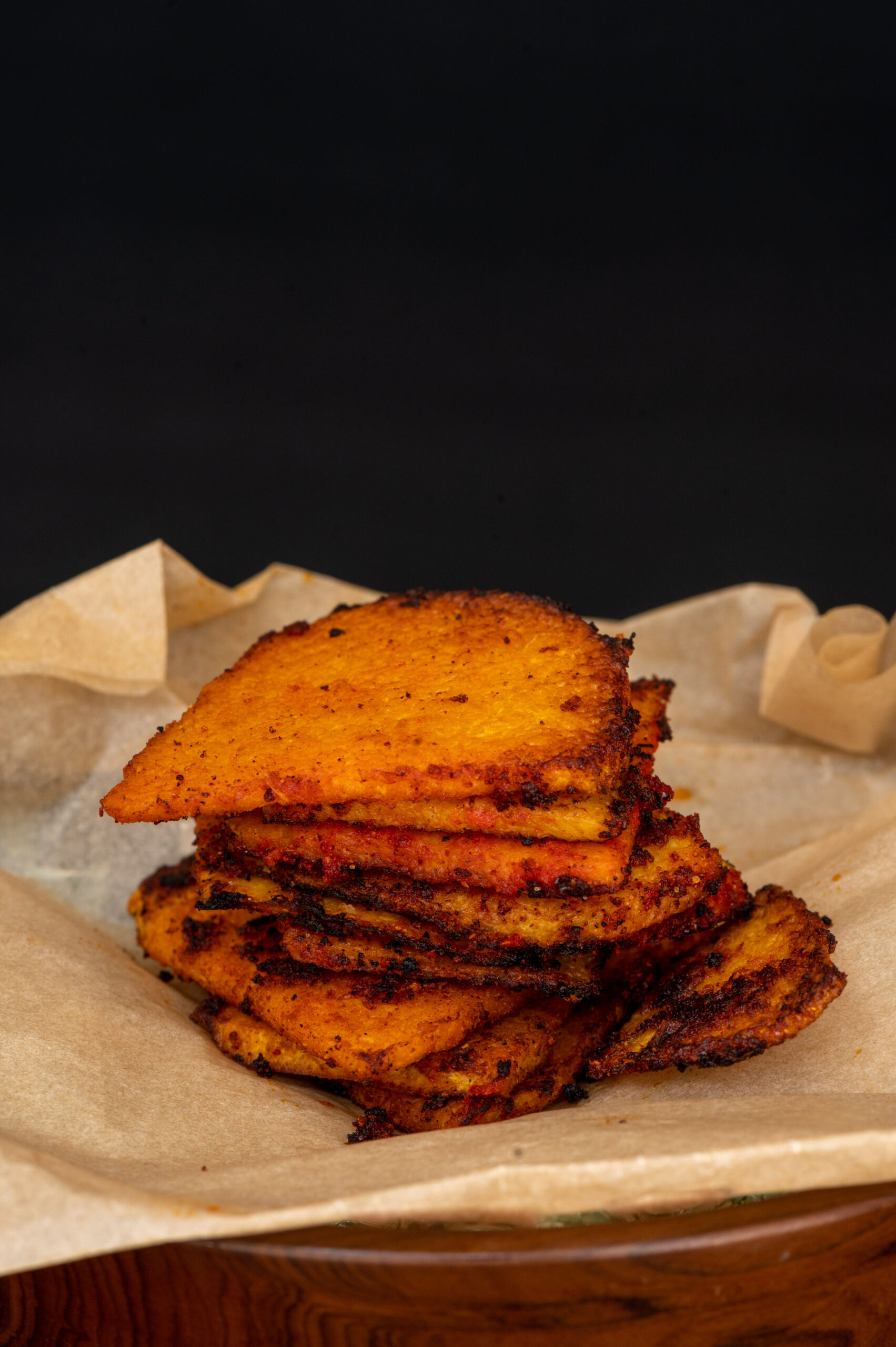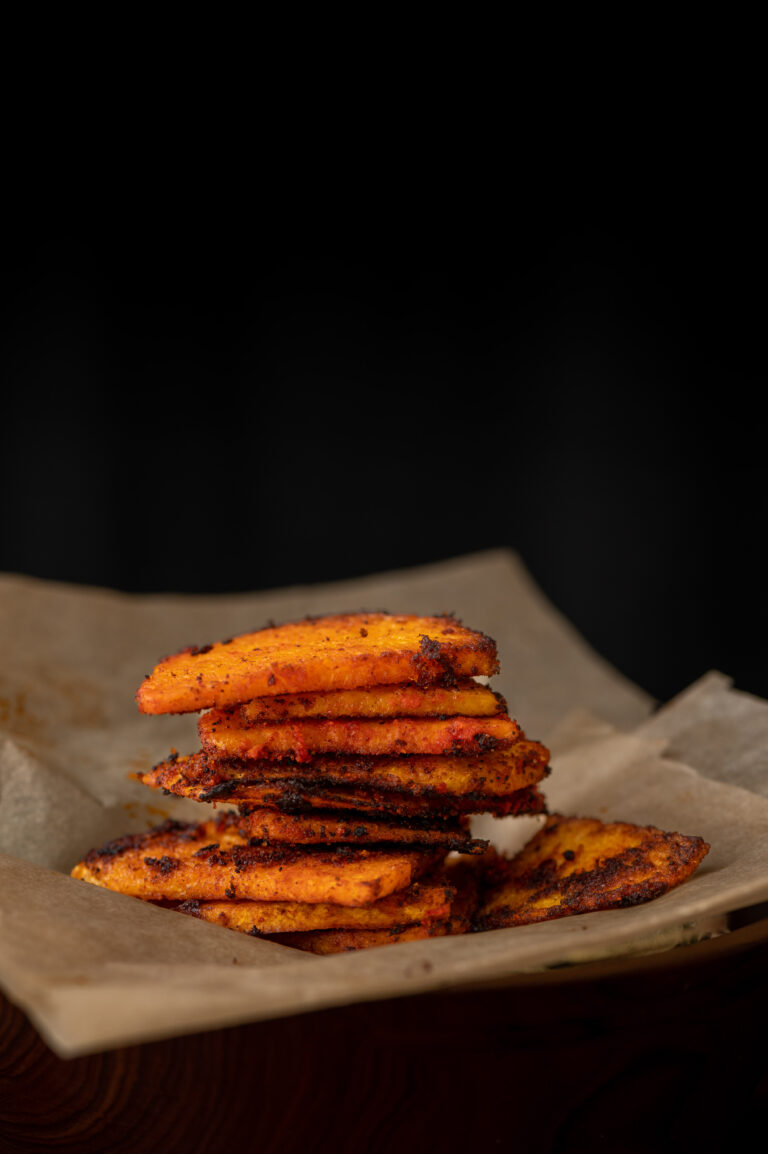When I shared the recipe for sabudana wada last week, I also remembered the other delights that my mother would prepare when she observed Farali fasts, in which grains were not permitted. The food was the only part of those fasts that I enjoyed as a child, but how much I enjoyed it! Sweet potatoes, fruits, a variety of tubers (and really, who doesn’t love tubers?) filled our plates and our tummies during those days. I presume the diet was carb-heavy to compensate for the lack of energy-boosting nutrients in the forbidden grains. My mother would often prepare sliced yam, which was boiled then deep-fried or pan-fried. Years later, I encountered yam chips in the home of a dear friend, and these came back to mind. So this newfound recipe contains elements of my childhood memories too.
As with most recipes that I learnt from my mother, and that I continue to share here on this blog, the masala or spices she used were very simple – salt, pepper and an optional dash of lime was all she used in her fried or sautéed yam dish. This ensured that the flavour of the actual vegetable or produce being used came through. This version, however, plays with more spice. One day, when I was visiting my dear friend Sujata Pelletier, her cook Annapurna spontaneously put together a crispy yam snack that reminded me of my mother’s fried yams, but was also distinct. In Annapurna’s version, the slices were thinner and the spices more pronounced. This was the one I wanted to prepare, so I called them up for the recipe and to double check that my ingredient guesses were correct. They were elated to hear that it was going to be written about, and I’m excited for them to see the photographs in this post.
Annapurna really is such an appropriate name for a person who cooks. “Annam” means “food”, and “purna” means “filled to the brim, overflowing”. Annapurna is also the name of the Hindu goddess of nourishment. That little bit of trivia makes recreating this dish in my home all the more delightful for me.
Yam is a very nutritious ingredient, absolutely packed with Vitamin A, C and B5. It helps with the absorption of other nutrients as well, and has a positive effect on cognitive function, menopausal symptoms, your metabolic and respiratory systems and more. I sometimes feel it is under-rated, and to this I say: never judge a book by its cover. While it’s rustic and not particularly attractive to the eye, it’s a vegetable with a fabulous taste. If you’re fairly new to this ingredient, a word of caution: be sure to oil your hands before you cut into it. Raw yam contains calcium oxalate, which makes the fingers itch!
But once they’re nicely fried, your fingers will itch in a different way – you won’t be able to stop at just one!


Yam Chips
(Yield: 2-4 servings)
1⁄4 kilogram yam
Salt to taste
3 tablespoons oil
1 teaspoon chilli powder
1 tomato (only pulp)
¼ teaspoon turmeric
Slice the yam and boil in water, along with the turmeric, until slightly tender. Drain well and keep aside.
On a plate, place the yam slices and add the chilli powder, salt and tomato pulp. Mix well until well coated. Let sit for half an hour.
In a pan, add the oil and once it has heated, place the slices gently on the hot oil. Allow them to turn golden and crisp on both sides. You may prefer to air-fry them as well (you can do the same for the sabudana wadas, by the way) They are now ready to serve.
You can enjoy your crispy yam chips just as they are, as a delicious snack, or have them along with hot rice and dal to add more texture and flavour to your meal.
Looking back, I can now see how a wide variety of other dishes from around the world would be suitable for Farali fasting too. These Spanish-style patatas bravas come to mind immediately. Do you observe similar fasts, and how do you plan your menus for the fast-breaking, or within the parameters of what is permitted?


